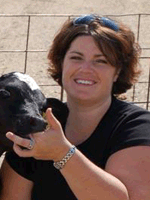
Autofeeders: What Have We Learned? – Ann Hoskins, Vita Plus
 We have learned many things along the way as autofeeders become more popular in the calf raising world. On the dairy, we tend to learn most things through experience – good or bad. While that makes it difficult to pinpoint exact “rights and wrongs,” learning from others’ experiences can help us focus on making the best use of this evolving technology.
We have learned many things along the way as autofeeders become more popular in the calf raising world. On the dairy, we tend to learn most things through experience – good or bad. While that makes it difficult to pinpoint exact “rights and wrongs,” learning from others’ experiences can help us focus on making the best use of this evolving technology.
Maintenance
Like all equipment, autofeeders must be maintained to remain in good working order. Develop a scheduled maintenance program for your machine. Check hoses, nipples and all other moving parts. Work with your equipment to determine what maintenance should be done to the machine.
Any area that is touched by milk is subject to buildup of bacteria, which, in turn, can be detrimental to the calf. Replace hoses and nipples regularly; do not wait until they are visibly dirty. Check them routinely for build up by simply running your finger in the hose. If it feels greasy, it is either not getting clean or needs to be replaced. The nipples should be cleaned at least daily. Once they show any type of wear, it is time to replace them.
I cannot stress enough the importance of cleanliness when it comes to autofeeders. Staying ahead of disease pressure will only help calf performance.
Calibration is also a key to healthy calves. We preach consistency in feeding and the only way for us to know if calves’ meals are consistent is to check the powder and water on a regular basis. This as an opportunity for improvement with most autofeeders. Calibrate machines at least weekly if you suspect an issue.
Feeding programs
As we’ve worked with autofeeders, we’ve done a good job of figuring out the best concentrations. I see most farms using a ratio of 140- to 160-grams per liter of milk replacer to water. Most calves consume between 7 and 10 total liters of milk replacer solution or pasteurized milk.
I am often asked how much calves should drink at a single feeding and how many feedings per day they should receive. Once again, we have no “magic answer” and this can be very farm specific.
That said, it is very important that the calves leave the feeder feeling content and full. If calves leave the machine still hungry, we see more sucking on one another. And, in the worst cases, they do not visit the machine often enough and do not consume enough calories daily.
On most farms, I see “entitlements” at about 2 liters per serving. This will give the calf the opportunity to drink about four full meals per day when spread evenly. Remember, in most cases, the calf will earn milk as time passes. You want the calf to drink when it’s hungry, but not always be hungry. It is important for the calf to be content on milk, but also consume water and starter in addition to resting.
Be conscious of the starter intake of your groups of calves. Most calves are fed starter in a group feeder, but knowing an average will help you determine if your feeding program is working well.
All the same rules apply for starter intake on an autofeeder as in an individual feeding system. Wean calves when they are consuming at least 3 pounds of starter and don’t move transition calves that are not consuming at least 5 to 6 pounds per day.
Monitor intakes to make sure you are hitting the necessary milestones. If your calves are not consuming enough starter, it could mean the milk program needs adjustment. Feed location, bunk height or other factors may also be at play.
As we learn more about managing autofeeders, we will continue to fine-tune how we do things. To explore this technology further and gain management tips, attend our Vita Plus Calf Summit preconference producer panel on Tuesday, June 24. Talk to your local Vita Plus consultant or dealer for more information.
| Category: |
Autofeeders Calf and heifer nutrition Starting Strong - Calf Care |

